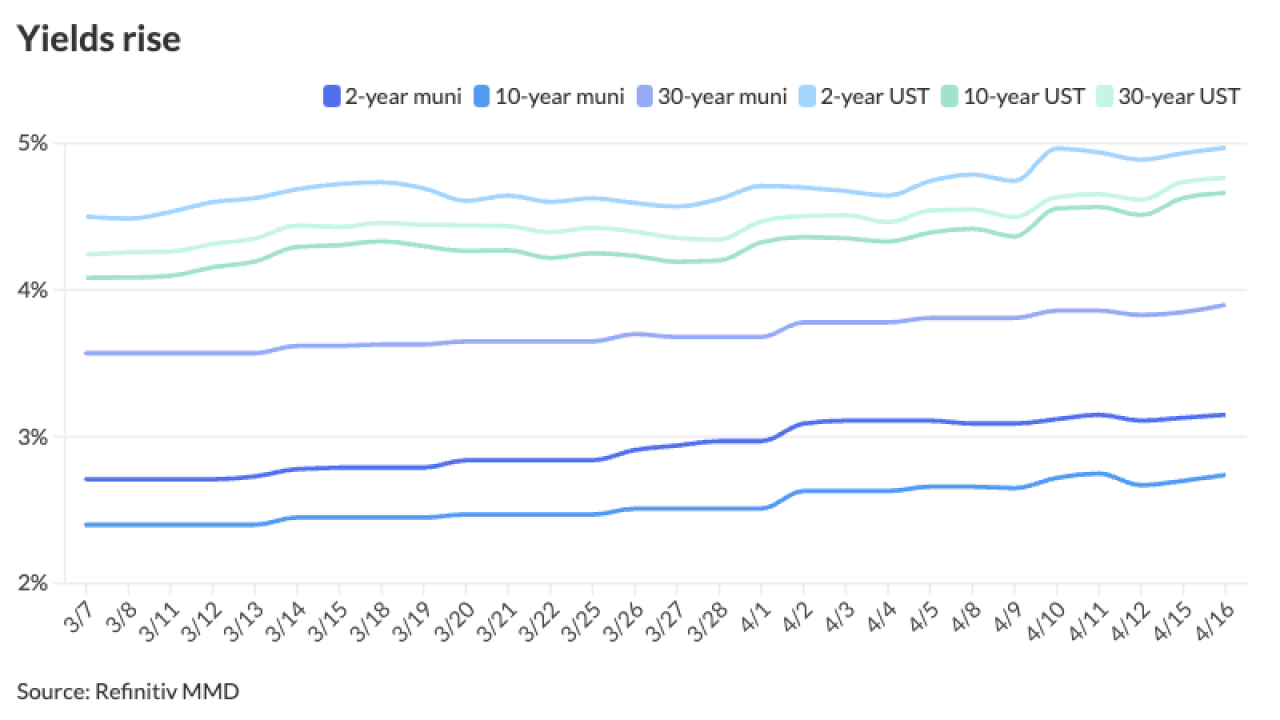Subprime concerns and a flight to quality in the Treasury market helped bring about the outflows in municipal mutual bond funds that the Investment Company Institute reported for November, marking only the second month in 2007 that losses were noted. During November, tax-exempt bond fund outflows totaled $969 million, making for total net assets $378.3 billion or down 0.4%. ICI, which reported the numbers earlier this week, tracks 682 municipal bond funds. The last time outflows were reported were in August, when subprime mortgage issues first began to surface in the muni market. Muni funds reported outflows of $1.18 billion that month. Before August, the last time outflows were reported was in April 2006.“We’ve had a credit crisis and the worst period was in August, and then a second shoe dropped in November, and actually it has continued through December as the pattern is continuing,” said Joseph Baxter, senior portfolio manager at Delaware Investments. “Now [with] the November sell-off, you did have some specific muni news.”“First the local government funds, like the Florida fund, came under pressure for holding so many [structured investment vehicles] and participants began to redeem,” Baxter added. “Then the monoline insurer news and the rating agencies began taking a look at their holdings. It wasn’t their exposure to the municipal bond market, but the problem is their exposure to the subprime market, and this was bad headline news for our market and scared investors.”Radian Group Inc. kicked off November by reporting a $704 million net loss for the third quarter, only to be shortly followed by ACA Capital Holdings Inc., parent of single-A rated bond insurer ACA Financial Guaranty Corp., reporting a net loss of $1 billion for the quarter. In response, all three major rating agencies announced they would review the holdings of all the monoline bond insurers and left the door open for potential downgrades. The result was market volatility.On Nov. 1, Municipal Market Data’s triple-A general obligation yield scale for 30-year bonds was at 4.39%, only to increase to 4.55% by Nov. 8, an increase of 16 basis points in eight trading sessions. The yield scale then dove back down to finish on Nov. 30 at 4.32%, a decrease of 23 basis points. “The story in November was the fallout from insurers and it made significant volatility during that month,” said Paul Disdier, director of the tax-exempt securities division at Dreyfus Corp. “The other side of that story was the firming in the second half that was Treasury-led.”Treasury bond prices increased during the month, as a significant flight to quality ensued on investor fears of fallout from subprime market woes. Treasuries maturing in 30 years yielded 4.64% on Nov. 1 and finished on Nov. 30 at 4.40%, a decrease of 24 basis points. Munis lagged Treasuries in the flight to quality because bond insurers play a large role in the tax-exempt market, and Disdier believes that part of the outflow story is investors moving into Treasuries for fear of the insurer implications. “Part of the story could very well be a tax-exempt to taxable change, perhaps people were concerned about the insured funds so they took their money out and invested into a Treasury fund,” he said.The ICI data paints this picture, as taxable bond mutual funds had inflows during the month that totaled $3.39 billion, putting total assets under management at $1.3 trillion.Baxter explained that one way to show retail buyers seeking shelter in Treasury bonds is the relative value between the two asset classes. According to MMD, on Nov. 26 the triple-A yield scale for 30-year muni bonds was 102.3% of 30-year Treasury bonds. The three-month average of this comparison is 94.0% and the one-year average is 87.9%. The higher the percentage, the cheaper munis are to Treasuries, meaning significantly more demand for Treasuries by the end of November.“As munis get cheap to Treasuries, it is the simple dynamic of more investors buying into those bonds or funds that buy those bonds instead of munis,” Baxter said. As subprime issues continued to affect the municipal market, the performance of muni funds also hurt. Lipper Inc. data shows that in November, the total reinvested performance of the category “general muni fund” was 0.17%. This category accounts for 247 funds with assets under management worth $83 billion. In October, when inflows were reported by ICI, this same category returned 0.28%, and in September it returned 1.43%.Tax-free money market funds increased assets under management by 3.3% to $448.9 billion. ICI monitors 260 muni money funds.Stock funds had outflows of $10.88 billion that put total assets under management at $6.60 trillion. ICI tracks 4,744 stock funds.
-
"April has been one of the worst-performing months over the past five years, which we believe warrants continued caution," BlackRock strategists said.
2h ago -
The public finance industry has been tracking the growth of the IRS budget with concerns that funding boosts would translate into higher audit rates for bond transactions.
3h ago -
Los Angeles Mayor Karen Bass aimed high in her State of the City speech just days before she will release a budget that needs to close a nearly half-billion-dollar deficit.
4h ago -
"We believe in this," Transportation Secretary Pete Buttigieg said.
4h ago -
The firm said Saporito's hiring is among several other additions made to beef up Wells Fargo's commitment to munis.
9h ago -
While Kansas' sales tax and revenue (STAR) bond program recorded its first default late last year, Bonner Springs is considering using it for a development that includes a Mattel toy-themed amusement park.
11h ago





